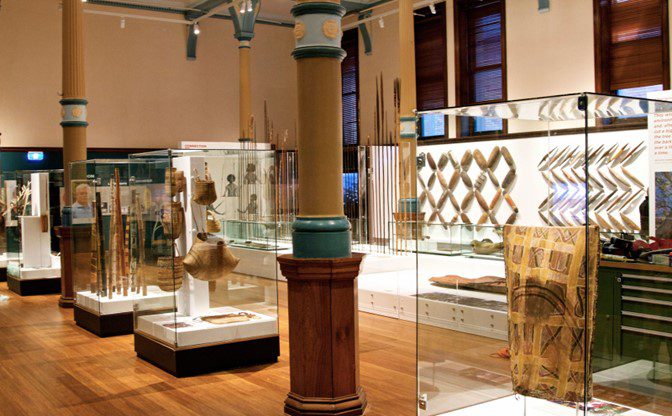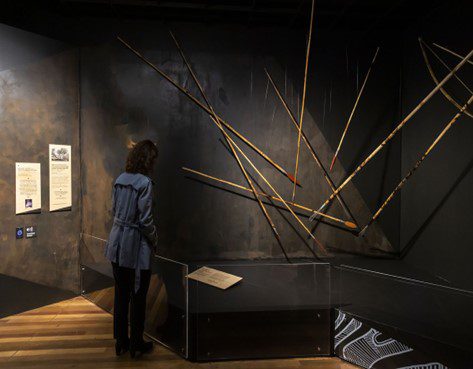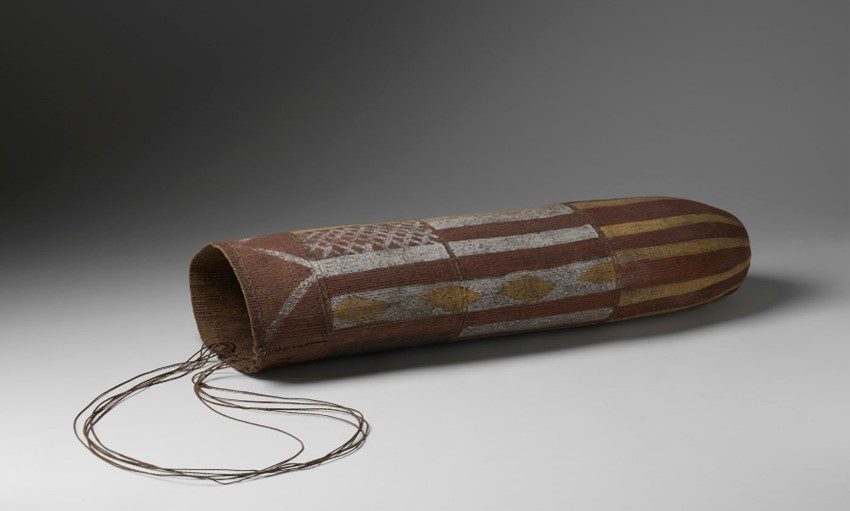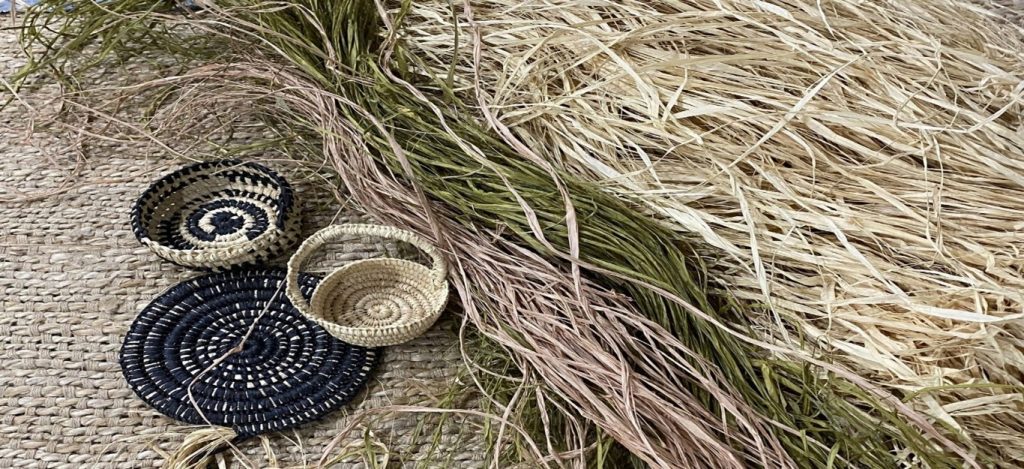Introduction
For the exhibition review project, I visited the online exhibition on the Australian Museum site titled First Nation. The decision made in the selection of the exhibition was due to my interest in the lives and the culture of the First Nation people who I also learned are also known as Torres Strait Islander Peoples or the Aboriginals. Furthermore, the history and culture of the Aboriginals have been a subject of fascination considering the current challenge of modernization that they face meaning there is a lot in a culture that is about to be lost.
(Bayala Nura: First Nation Exhibition)
The First Nation peoples have practiced and live their culture in Australia since the time of the memorial. The rich and diverse cultures are maintained through orality, song, dance ceremony, and language that the world has yet to discover. The museum presents some of the most significant First Nation collections that represent these cultures with various artworks, cultural materials, and technologies that represent the various Aboriginal communities in Australia. Furthermore, the exhibition underlines an increased collaboration with the Aboriginal peoples and communities which in turn ensures that the various objects that are held in the museum both in the Aboriginal and Torres Strait Islanders collections are given a proper interpretation and offer a correct representation of the culture and life of the people.
There is a rich knowledge embodied in the collection which is activated through the various programs and exhibitions within the collections that offer a connection to the living practices that we know while also deepening the knowledge of the public about the First Nation’s culture along with their lived experiences.
Themes
The exhibition features a collection drawn from the hidden histories of Australia and its citizens as the premise is to allow people to learn from the knowledge that is shared by the First Nation people. There are three sections to the exhibition which are the First Nation, Garrigarrang (Sea Country), and Bayala Nura (Yarning Country).
(Artefacts of culture)
The approach of the exhibition is aimed at dedicating and demonstrating respect towards the people and other beings who maintain the law of the land. The First Nation people are referred to as the elders and traditional owners of all the places, knowledge, and stories presented in the exhibition and are lauded for their resilience and guidance in the maintenance of their culture. The selection of this exhibition is in turn due to the recurring theme of national identity that is presented in art as covered in the course. Aboriginal art as a form of identity falls within the precipice of cultural nationalization where art becomes a part of the generation of invented tradition. In this way, traditional artifacts such as that represented by the exhibition become a distinct part of the national culture while they are made accessible for everyone to celebrate the national sentiments they present. The artwork and collection of artifacts as represented in the exhibition consist of objects that are interpreted and accepted by the world of art as art that offers support to the assertion of the self-identity of a people. The exhibition, therefore, becomes a declaration of the right to advance and preserve the identity of the First Nation people within a modern world.
Exhibition Approach
The exhibition takes on a relational approach in its display of First Nation artifacts, paintings and images. This approach is centered on the academic nature of the art object and specimen representation that is featured immediately after one enters the exhibition. Torgeir Rinke Bangstad et al (2019) notes that museology exhibitions are haunted by profound ambiguity concerning historical objects that are on the move owing to time. Though museums create new worlds for a displaced object, they do carry the burden of representing something that goes beyond itself in the form of a concept that is absent.
In this instance, the concept of national identity is present in the representation of the life and culture of the aboriginals in Australia while the exhibition is fraught with the tension of the displacement of history where people are met with objects that they are not familiar with. Thus the approach taken by the museum entails a relational approach towards the colonial culture of the nation as it seeks to maintain the history while also providing an educational experience to the people in the display of the aboriginal materials. The relational approach in this instance conveys a relevant relationship between the similarities that unite the members of the First Nation community and the connection between the country at the present moment along with observable historic events and objects presented in the exhibition.
In its relational approach, the museum aims at showing how these cultural differences exist thereby meeting the needs of the audience which would not be straightforward considering the role and nature of racism in the country along with the historical ill-treatment of the first nation community as well. Thus the exhibition takes on a culturally appropriate way of ensuring the views of the first nation people are presented by underlining the various themes that each cultural object offers. In taking up a relational approach towards the exhibition of the aboriginals, the exhibition is able, to tell the truth about the nation’s past which is an incredibly important process in understanding the country and the people in the present situation in addition to how it came to be a nation.
The relational approach to museum exhibition is a highly confronting process, but it does present a powerful means of dealing with the grief that the First Nations are facing and making way for healing that offers unity to the people that were at one point in history divided. The premise of the exhibition in this instance is to allow the people to stop pretending that the First Nation community did not exist and also accept the fact that change cannot happen when the entire system and nation are grounded in denial. In its relational approach, the exhibition seeks a way of letting the public understand the historical inequities that need to be addressed while the gap between the non-indigenous and indigenous people continues to widen.
Curatorial Approach
The task of the curator in this instance involves research, critical reflection investigation, and discovery with the aim of exposing a particular ideology. The curatorial approach taken in the presentation of the exhibition entails making the ideas around the objects of the first nation multi-layers to the extent that it is looked upon in different ways. The curatorial approach in the exhibition is dialogical based on the nature of the art and culture that is represented in the exhibition. The dialogical curatorial approach allows a conversation with the source community to influence the process as well as the outcome of an artwork (Unruh, 2015, p 77). The objects for instance that are presented in the exhibition titled First Nation explore the methods of aboriginal self-representation. The Ngumpie weaving and woven baskets that are presented in the exhibition are a mark of the development of the indigenous practices that have been characterized by the art community.
(Weaving and Woven Baskets)
In this, the conversation that is created is that of the representation of the First Nation people within the contemporary spaces of the art world in creating a dialogue between their creations and their intended artistic impressions that are part of their daily lives. Furthermore, this dialogical approach to the curation of the exhibition provides a challenge to the traditional imperial nature of museums within colonized nations. The method is focused on the formal elements and the aesthetic qualities of the isolated objects belonging to the aboriginals in addition to the ethnographic display of the objects which offer a sign of their traditional way of life.
Objects Exhibited
The objects exhibited in the collection feature artworks and images that provide a connection to the current living practices of the people while also deepening the knowledge of the public on the culture of the first nation people and their lived experiences. The exhibition features the Mahn (fisherwoman) sculpture by Aunty Phyllis Steward.
The piece in its description honors the fisherwomen of the Coastal Areas of Sydney and it is made from Lomandra. The object’s features create an ethnographic discourse that is accompanied by relatable objects which depict the way of life of the aboriginal people. The aim is to allow the viewers to understand the function as well as the role of the object within its cultural and historical context. The display of objects such as tools for hunting, farming, fishing, record books of captured First Nation people’s names and their locations in addition to slide shows that depict the colonial tactics used by the government soldiers to capture the people are an attempt to fit people into the culture of the indigenous people. The idea is to make the people have the same regard for these objects as the First Nation and understand their ways of life and how these communities that made these objects see them in their daily lives. There is a fine art approach that is attached to the exhibition that allows it to take an ethnographic approach which underlines the fact that the aboriginal communities and cultures do not belong to the past but were robbed from them.
Strength and Weakness
The strength of the exhibition lies in its presentation of the First Nation Objects and artwork not only through an anthropological lens but also through a social lens. The relational approach in its curation positions the cultural objects and the artworks produced by the indigenous people within the realm of artifacts thereby allowing them to exist outside the established parameters of the cannons of Western art. The idea is to create an attitude that is entrenched in the institutional framework of indigenous art on its own which in turn would influence the wider public’s understanding of indigenous life and what they considered as important (Bell, 2012, p 70). In providing it with a social lens, the exhibition is positioned as historical works or artifacts that can be compared to some of the artworks that have been created in the modern landscape. This ensures the culture is never forgotten in addition to the fact that the creation and the culture are appreciated for their contributions.
The weakness of the exhibition lies in the exclusion of the indigenous people as the artists from their audience in the discussion and shows the nature of the power gap that exists. A question that came up during my visit to the museum was how it is possible for the public as outsiders to gain the right to judge the objects that are created by other cultures. Though there is a value in comparing the different cultural materials from an outside perspective, the exhibition seeks to decolonize the minds of the viewers which means the display of objects has to have the creators of these objects present. The display of the material culture of the indigenous people has to include the indigenous people to allow the creation of a conversation about the experience of these people and their culture regarding the current situation.
Overall Remarks on the Display
The physical and visual display of the exhibition were centered on the creation of a conducive learning environment where the public would learn about the culture of the First Nation people from a social context. This means the curatorial approach was centered on de-colonization by allowing the culture of the indigenous people to speak for themselves rather than depending on the voice of the institutional powers. The visual display focused on the humanistic nature of the indigenous people which was meant to counter the colonial thought that their culture was backward and primitive. Furthermore, the sovereignty of the indigenous culture is evident as the visual representation carries forward the cultural spirit of their time as presented through their distinct aesthetic practices.
This highlights the fact that cultural artwork are not necessarily objects but conversations and experiences that have a direct effect on the public concerning the marginalized communities. The visual display and arrangement of the cultural pieces have been made to overcome the traditional ideas of how objects concerning the aboriginal people should look in museum. The exhibition in this case is highly dialogical considering that the exhibition creators have worked with numerous indigenous communities in the representation of the culture for all to see.












